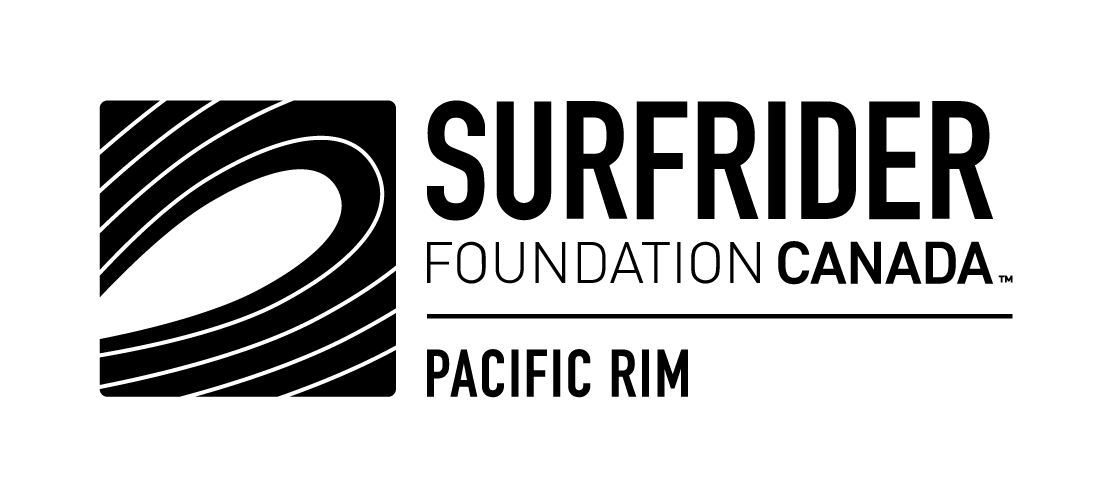Shred Neoprene and Repurpose it!
One local is committed to finding a solution to our wetsuit waste. Will others join her?
It was obvious to Karen Hendry, long-time Surfrider volunteer. Neoprene is a problem. It’s toxic to produce; it degrades quickly. Then there’s the waste issue. Those who enjoy cold-water sports, like surfing off the coast of Vancouver Island, often don’t know what to do with their old wetsuits and often send them to landfills. Karen was determined to find a solution. Especially as the pile of discarded wetsuits was growing rapidly on her patio.
During the high season, thousands of people flock to Tofino’s beaches. Those who are on the search for good waves are typically sheathed head-to-toe in neoprene. Neoprene has played a key role in the global spread of surfing to colder waters far beyond the tropics.
The central chemical used in neoprene is chloroprene. In 2010, the US Environmental Protection Agency classified chloroprene as a “likely human carcinogen” (EPA 2023).
The 2011 US National Air Toxics Assessment estimated higher than expected levels of chloroprene in the community of LaPlace, Louisiana, just a few miles from the only neoprene production plant in North America, Denka (EPA 2023). In February of this year, the US Justice Department launched a lawsuit against Denka for presenting “an imminent and substantial endangerment to public health and welfare” (US Department of Justice 2023). The lawsuit alleges “that Denka’s emissions have led to unsafe concentrations of carcinogenic chloroprene near homes and schools” (US Department of Justice 2023).
Once produced and manufactured into wetsuits, neoprene is not an durable material. Regular cold-water surfers often buy new gear every year, even if properly caring for and mending their wetsuits. Neoprene seems constantly to be in a state of disintegration. It’s common to find your feet speckled with black after peeling off booties. Areas on the wetsuit that are especially stretched, like elbows and shoulders, thin within a couple of months. The shed of neoprene microfibers adds up and contributes to more ocean pollution.
Then there’s the problem of what to do with wetsuits that are beyond repaired. Most worn-out wetsuits sit in landfills, resistant to biodegradation.
After living in Tofino for three years, Karen became interested in developing a solution to wetsuit waste. This was 2019, and Surfrider Pacific Rim was running their Wetsuit Reincarnation Program, which involved shipping to California to make yoga mats. This was costly for the small, volunteer-based non-profit, and Karen was determined to find a local solution. With a marketing background and loads of determination, she jumped into the recycling industry.
Shred Neoprene was launched to develop a plan for the circular use of the material. She started collecting old suits from around town to have recycled into interlocking mats. These types of mats have many purposes. Surfers use them to stand on as they change into their gear. They’re also great as flooring in workout spaces, playrooms, and even in tents. Once worn down, the mats could be recycled again into new products. It was a brilliant idea.
It was early-2020.
As Karen would discover, after careful and persistent research and outreach, very few companies in Canada are willing to work with neoprene. Especially during a global pandemic.
A BC-based tire rubber recycling business agreed to try. First, they needed Karen to wash and dry the wetsuits, remove the zippers, and cut the neoprene into panels – all of which she did before shipping to them a super sack full of the material. The company shredded and ground it down, and they made a sample mat. It totally worked. But the success was fleeting.
With COVID-19 in full swing, the company decided they couldn’t carry out the plan. Shredding and grinding neoprene create a lot of fluff, which can clog up machines. Having to clean them frequently is labor-intensive, and labor was in short supply. They sent the super sack, now half full of ground-down neoprene, back to Karen.
She pushed on, deciding to separate the grinding process from the production of mats. She started working with Mattress Recycling in Hope, BC to do the grinding. Karen sent them two skids of old suits. Then the floods came, inundating the Fraser Valley in the fall of 2021. Understandably, Mattress Recycling had to withdraw from the plan.
Karen continued her search, now supported by a generous cash donation from the Wickaninnish Inn. She contacted many companies in different industries. TerraCycle was an option, but it was too expensive. She finally found a plastic recycling company in Burnaby willing to do the grinding. But Karen had to look to the US for the manufacturing of mats, since no Canadian-based companies were able. She found a good match in Lava Rubber, based in New Jersey. Lava Rubber works specifically to repurpose neoprene, and more than 100 wetsuits that Karen has collected over the years are en route to them (at the time of writing).
This journey has been hard but also very rewarding. In Karen’s words, “I met many people and organizations along the way doing incredible work to protect our environment.” She heard from folks as far away as France. This support and knowledge fueled her continued search. Although Shred Neoprene closed, Karen remains hopeful that we can work as a community with Surfrider Pacific Rim to find the best solution for our old wetsuits.
From Karen’s commitment and hard work, we’ve learned that change is needed in what we do with our old wetsuits. She’s been central in nudging that change forward, but she can’t do it alone.
Genevieve Fuji Johnson writes for Surfrider Pacific Rim
References
US Department of Justice, Office of Public Affairs, “Justice Department Files Complaint Alleging Public Health Endangerment Caused by Denka Performance Elastomer’s Carcinogenic Air Pollution.” 28 February 2023 (https://www.justice.gov/opa/pr/justice-department-files-complaint-alleging-public-health-endangerment-caused-denka).
Environmental Assessment Agency, “LaPlace Louisiana: Background Information,” 23 January 2023 (https://www.epa.gov/la/laplace-louisiana-background-information#epa-involved)
